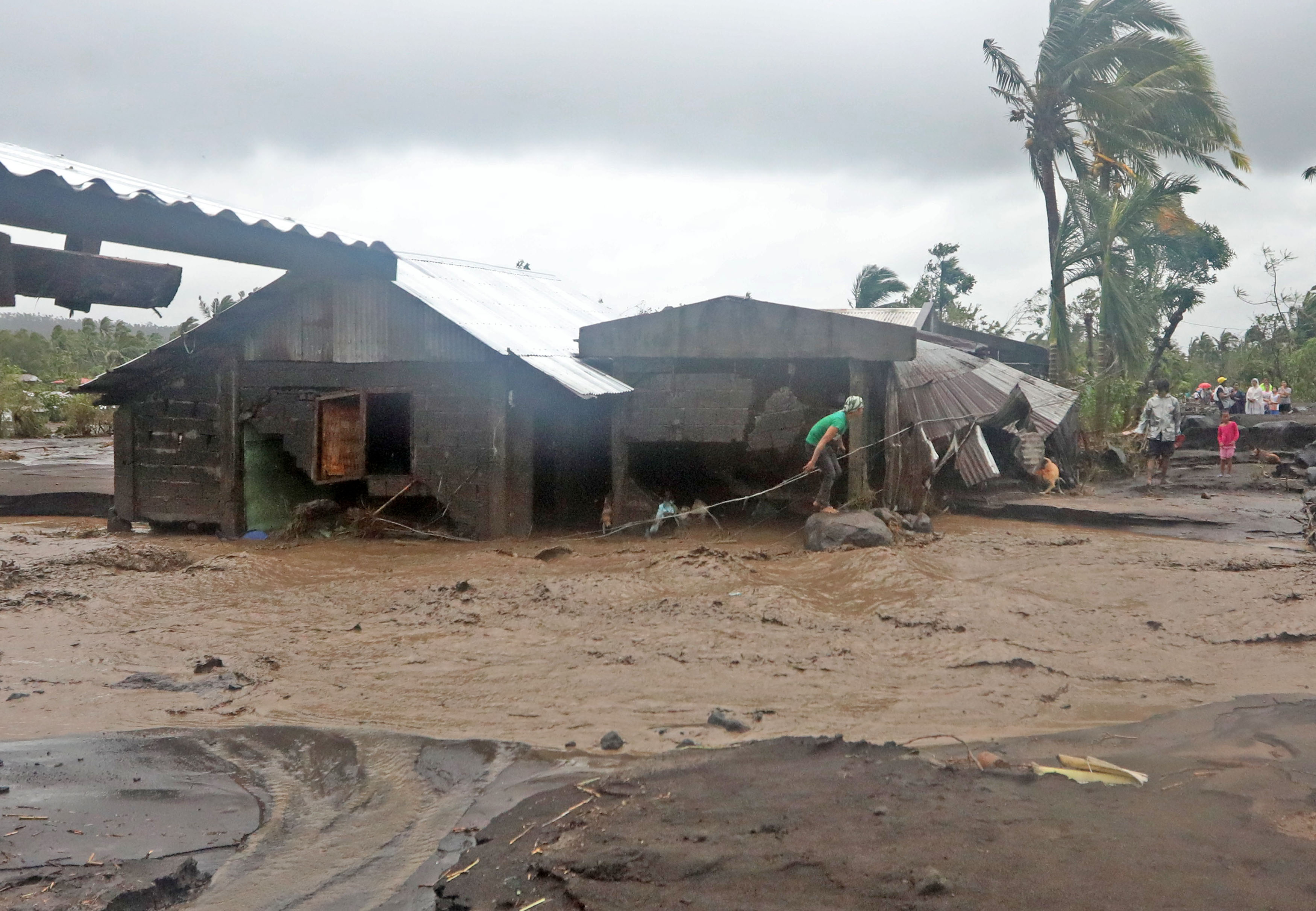Darker shade of rain: What it means to stand along the typhoon belt
I woke up on the morning of Halloween to the sound of thrashing branches and leaves. The air bore the odor of moistness—heavy, cold, akin to being engulfed by water. The temperature had dropped significantly the night before, leaving my tarsals and knees squealing in pain.
I immediately toddled to the veranda and looked up. Storm clouds hung like torn dark wooden panels from off a decrepit ceiling, blowing winds with enough strength to tilt three of seven large palm trees in my garden, which had survived more typhoons than I could possibly care to remember.
I felt my skin crawl to the rhythm of intermittent gusts and outpouring of rain. I could’ve sworn I heard from a distance a kitten crying out for its mother.
Prior to my brain going full throttle as I have yet to get my morning coffee, I recalled superstorm Rolly (#TyphoonGoni) making its first landfall the night before in the province of Catanduanes. It bore sustained wind speeds of roughly 250 to 360 kilometers per hour—the strongest cyclone ever recorded on earth.
By the time I was tending to my second hot mug, the Category 5 typhoon had made its second landfall somewhere in Albay.

Houses at barangay San Francisco in Guinobatan Albay were covered with Lahar after Typhoon Rolly (The Philippine Star)
One critical point of interest was Malacañang’s decision to hold a calamity briefing after the typhoon had already ravaged much of the Bicol region. I find that not only incompetent, but totally uncalled for at a time when government assistance was needed most.
I lost no time switching on my laptop for updates on the day’s news. I’m no stranger to the wiles of cyclones. I was seven years old when typhoon Yoling cut across the country in 1970 at maximum sustained winds of 150-to-250 kilometers per hour.
College life in the ‘80s at the University of Santo Tomas was anything but storm-free. Manila, notorious for its flash floods,within mere seconds of a passing storm, turned into a sea of waist-high drainage water complete with rats and roaches scampering for safety.
The jeepney I was in was caught in the middle of Lagusnilad, an underpass where water had reached chest-high within half a minute. Suffice it that leaping into water too contaminated for even rats to survive on wasn’t really my idea of a Caribbean dive site.
Decades later, one memorable date I had with the wife was a leisurely stroll down Makati City’s corporate row amid soaring galvanized iron roofs, shards of plywood, and the most unforgettable scene in memory to date: a huge fire tree collapsed on topped of what once was a brand-new jet-black Toyota Land Cruiser. The 4.7-liter V8 all-wheel-drive workhorse engine didn’t stand a chance.
Regardless of these stark inconveniences, living in the city is quite the privilege when set side by side with storm-ravaged provinces.
Accepting the reality that storms do come and that we will survive them should never be the government's excuse for incompetence.
I recall a trip to Pangasinan after the monsoon rains loosened the lahar, which only weeks ago had trampled over tens of thousands of homes located near the foot of Mt. Pinatubo. Huge streams of ash-heavy water barreled through communities, uprooting houses, and stores. It took our team weeks to shovel pyroclastic material beginning from rooftops.
As a reporter, I once visited a coastal community south of Manila after waters from the Laguna de Bay overflowed just hours after a thunderstorm. I had to wade through waist-high floodwaters to reach the home of a fish pen owner. It would’ve been just another day in the field had it not been for the race to higher ground against mice and roaches—and a footlong snake—as competitors.
Weeks after super typhoon Yolanda barreled across Leyte, I sent a team of editors to the city of Tacloban to check rescue efforts there. I was in Makati City, roughly 800 kilometers away, when stories of rotting bodies yet unidentified—many hitherto unrecovered—reached the newsroom, laying in neat lines across several streets. One can smell the stench of death from miles away.
Lying on the typhoon belt had taught Filipinos to be resilient. We rise to the occasion always with the hope of rebuilding what we had lost.
But accepting the reality that storms do come and that we will survive them should never be the government's excuse for incompetence. The first principles of survival and hope as a response to darker shades of rain should be more than equaled by the State, for what reason should government exist if not for these?



